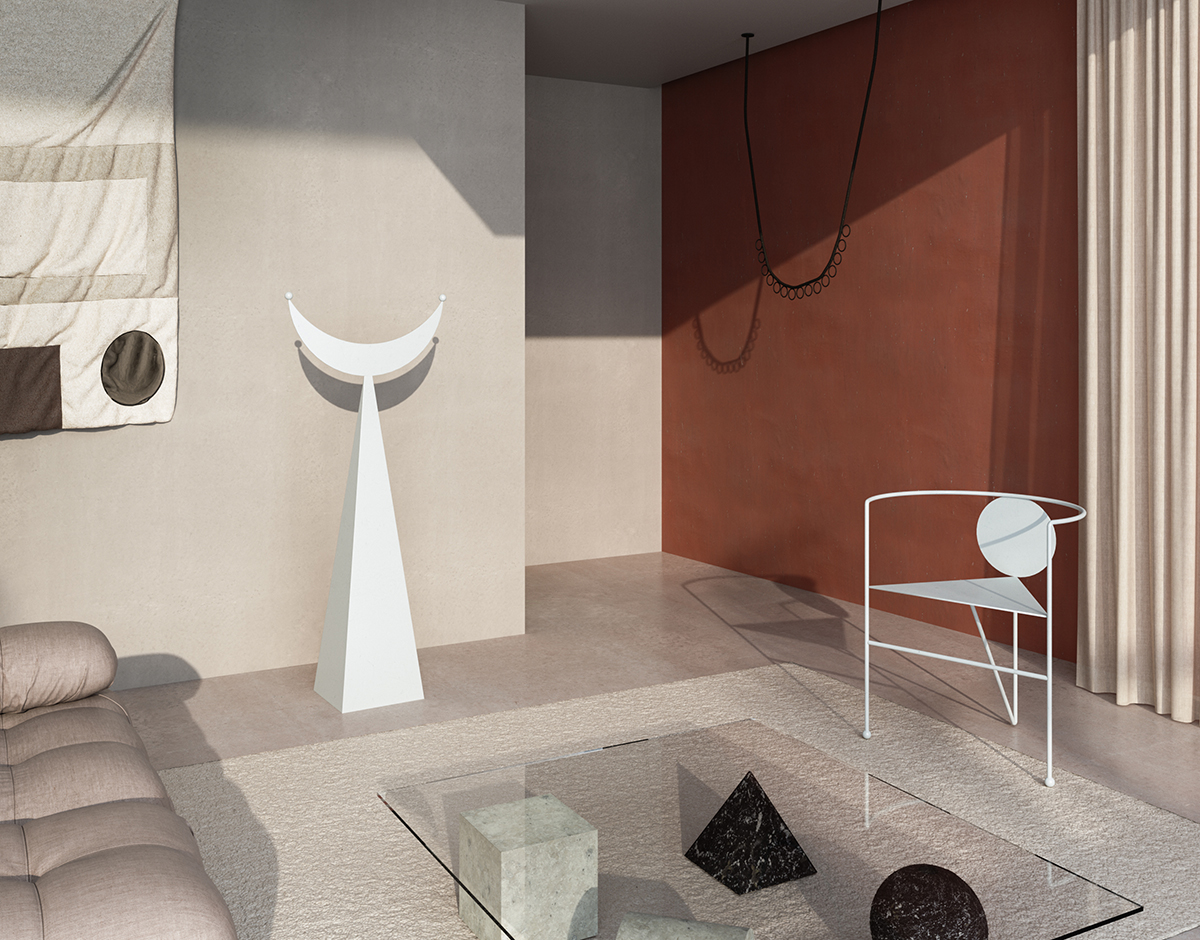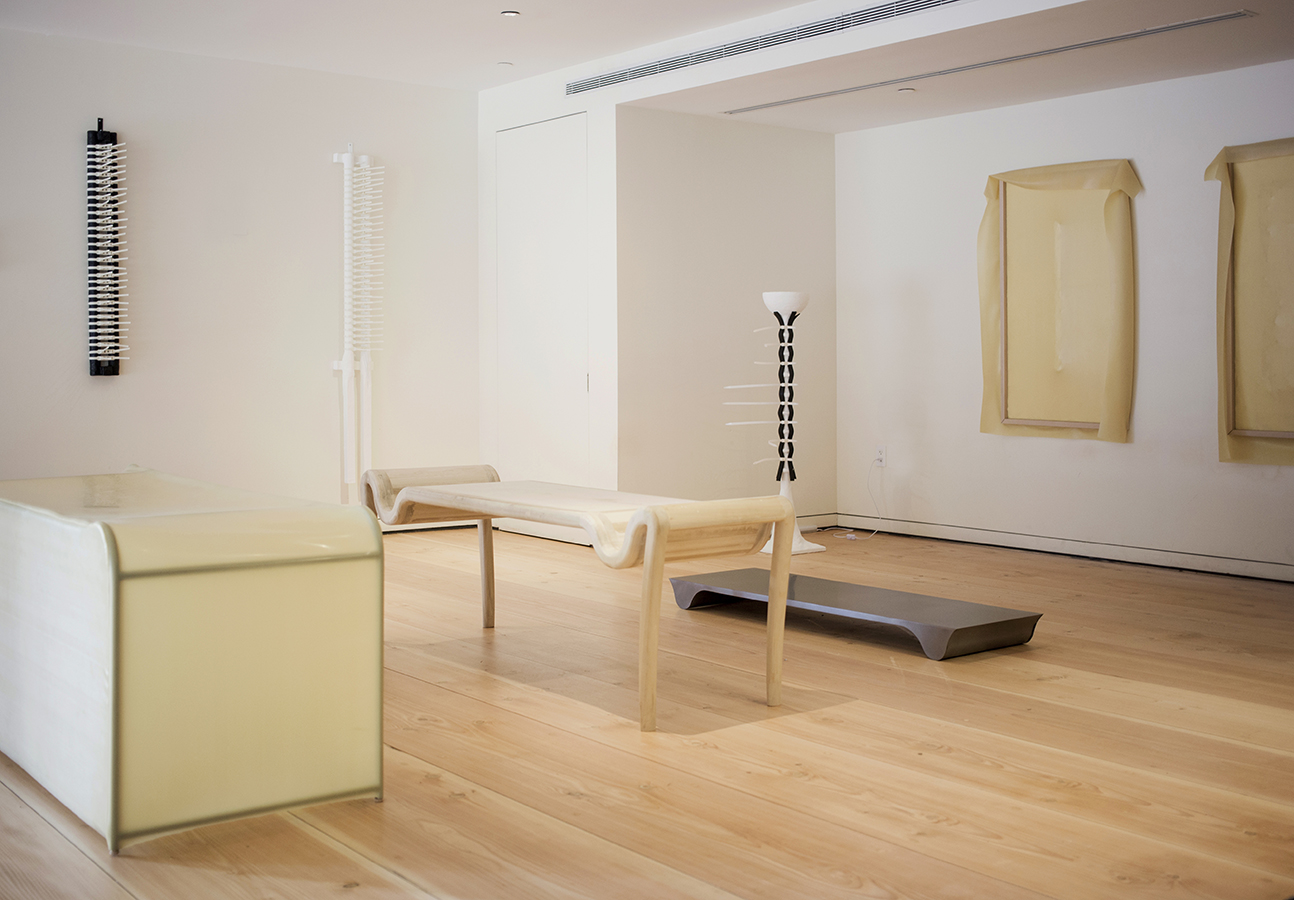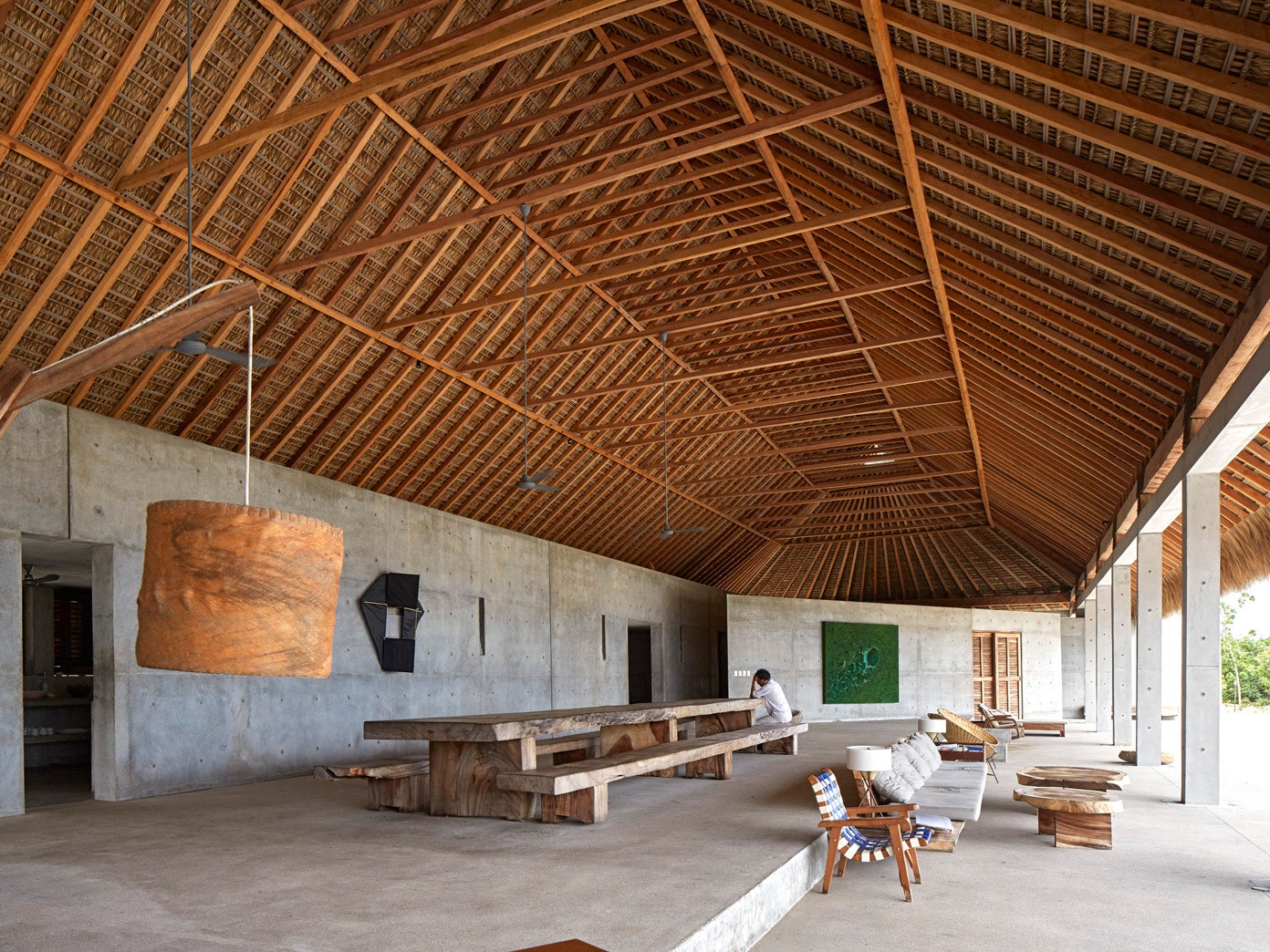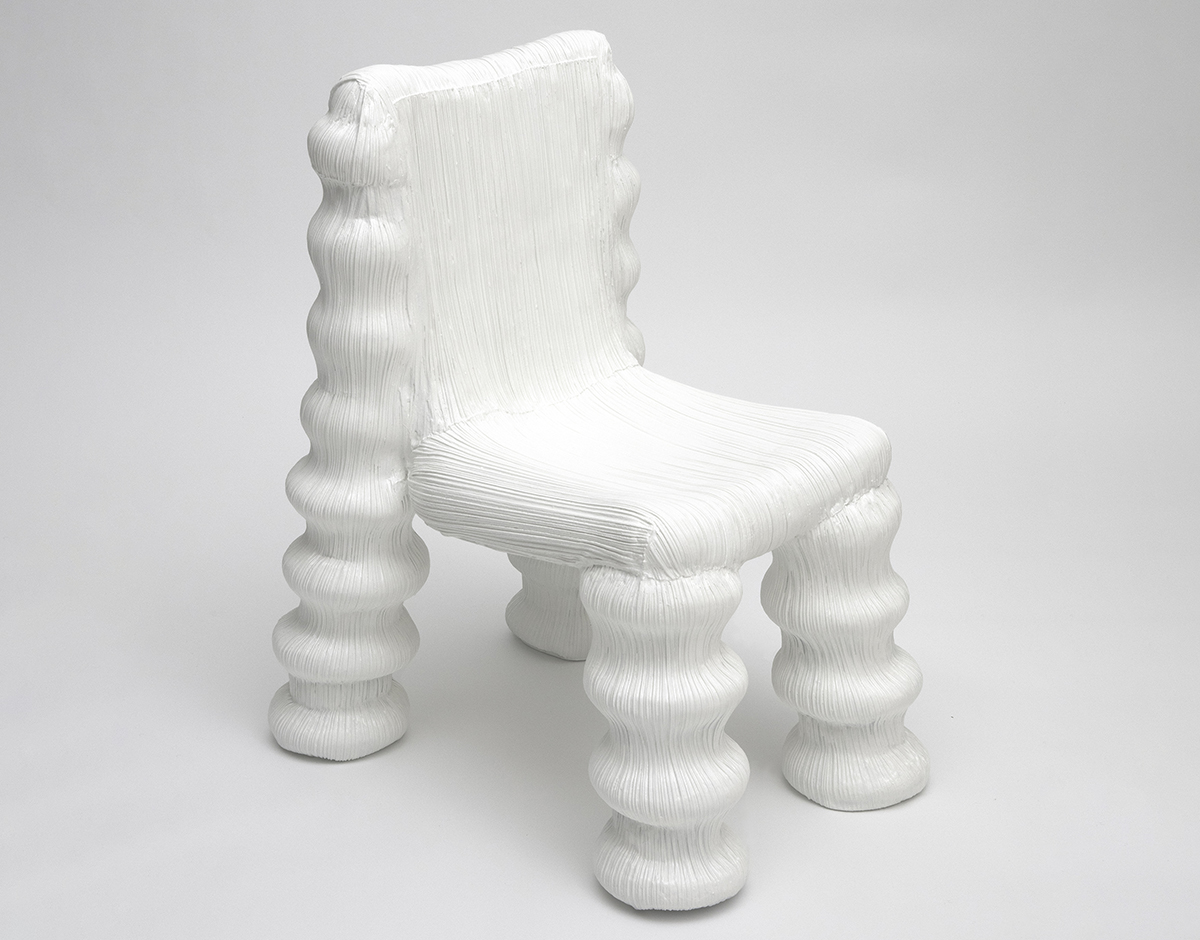
09.29.21
Up and Coming
Meet the Chair Equivalent of Freezing Your Issey Miyake Pants in Resin
It was an interest in fashion, coupled with a job in retail, that first sparked Brooklyn designer Michal Cihlar’s fascination with furniture. At the time, he was studying for a degree in architecture at NYU, but he wasn’t finding satisfaction with the drawn-out process required to realize buildings. “Like many people in architecture, I became frustrated with the scale and the speed of things. You’re very removed from the creative process,” he says. Instead, it was a part-time job at the cult fashion shop Opening Ceremony that opened his eyes to more creative possibilities. “They always had these rotating sets and part of it would be furniture. That, I think, is what really sparked my interest.” With carpentry skills gleaned from a sculpture course and access to deadstock fabric, Cihlar started making playfully bulbous pieces that nod to the way textiles move and bounce on the body.
Cihlar’s latest pieces are foam-bodied chairs and stools draped in micro-pleats that have been hardened in resin and sprayed with matte paint to obscure the nature of their materiality. “What attracts me most is the phenomenon of the material’s state changing,” explains Cihlar of his process. “I think that’s why I really like working with fabric. You’re able to take a material that’s so soft and malleable and when you apply certain processes, it transforms into something solid and functioning.” We spoke to Cihlar about his experience working with textiles, the process of finding his forms, and what materials he’s looking to tackle next.

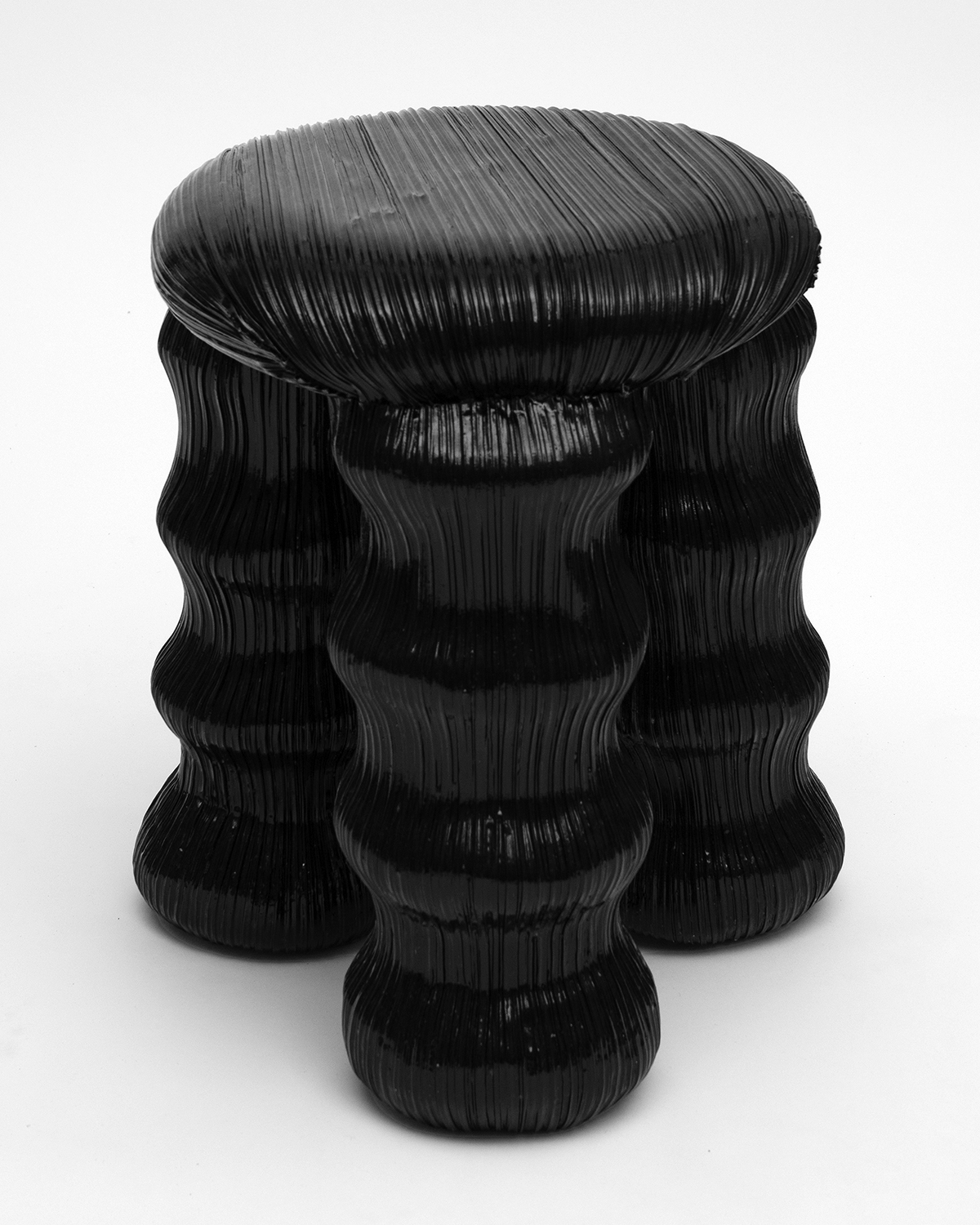
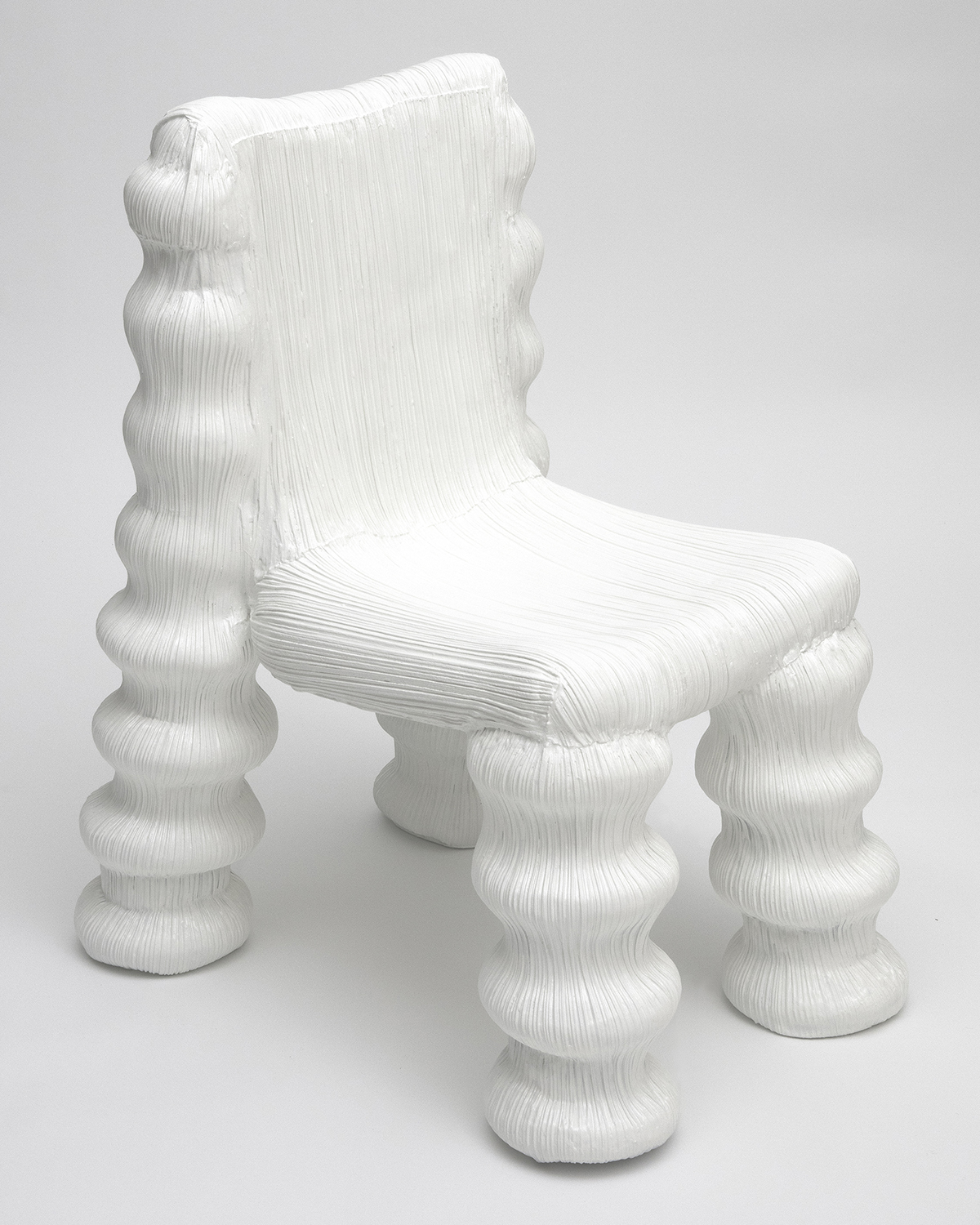
Tell us about your background.
As a kid, I was always intrigued with building things. Even when I would go on vacation to the Czech Republic, where my whole family is from, I would spend like a month at my grandparents’ mountain house. where my grandpa had a woodshop. I guess he was my first point of contact in terms of unlocking that creativity and being able to work with my hands. After that, I went to NYU for undergrad, where I studied architecture. That was my first formal introduction to design as a real discipline, and it’s where I gained a lot of technical ability in terms of being able to draw and use different programs and modeling and things like that.
What were your early pieces like?
Because there was no formal industrial design or product design path for me to take, the closest thing I could do was experiment in my sculpture class. Like most people, I started out working a lot with straight planes that were very Judd-esque, just because I think that was the most accessible and easiest method of production.
For your pleated chairs and objects, you use unsold or leftover high-end fabric. Why did you first want to work with these kinds of materials?
I think that project was born out of my intrigue with the movement of fabric and always seeing it on a body. That particular fabric, the way it moves is really specific. It bubbles and folds as you move your body and bend your legs and arms; it reminds me of a jellyfish or something. It always felt like that movement was temporary, and so with those pieces, I wanted to capture that movement and solidify it into a frozen state. For the chair, I translated that bubbling and rippling effect onto the legs of the chair. The lamp was a more freeform kind of exercise, given the fact that it’s not something that has to be functional in the sense that it can support a body. To make it, I would basically just take a concrete tube and then soak the fabric with resin. It’s a really similar process to fiberglass, which I’ve used in some of my other pieces, but basically, the fabric just gets soaked and then you have a certain timeframe during which you’re able to manipulate the fabric. I shape it based on intuition, to mimic the movement of the fabric.
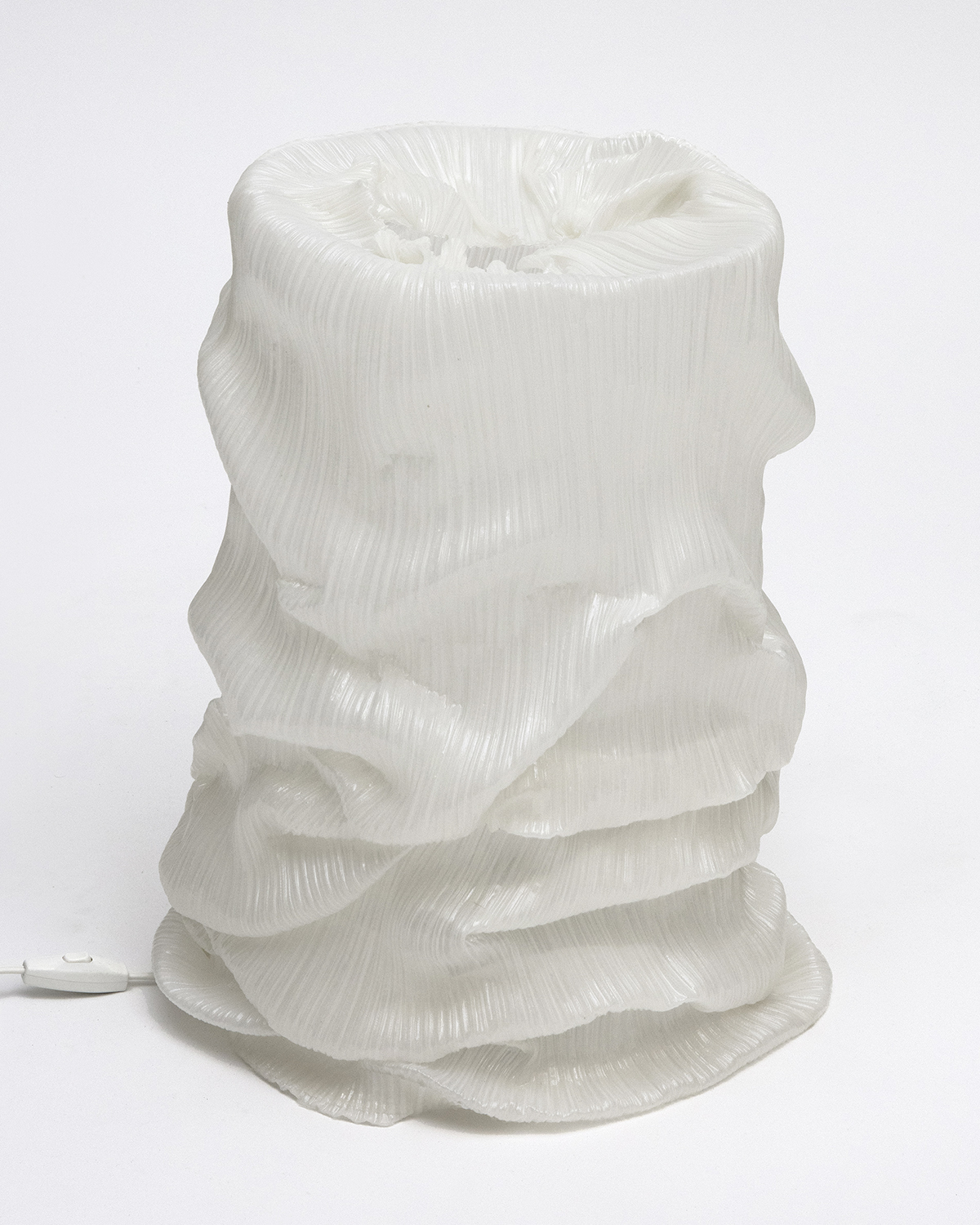
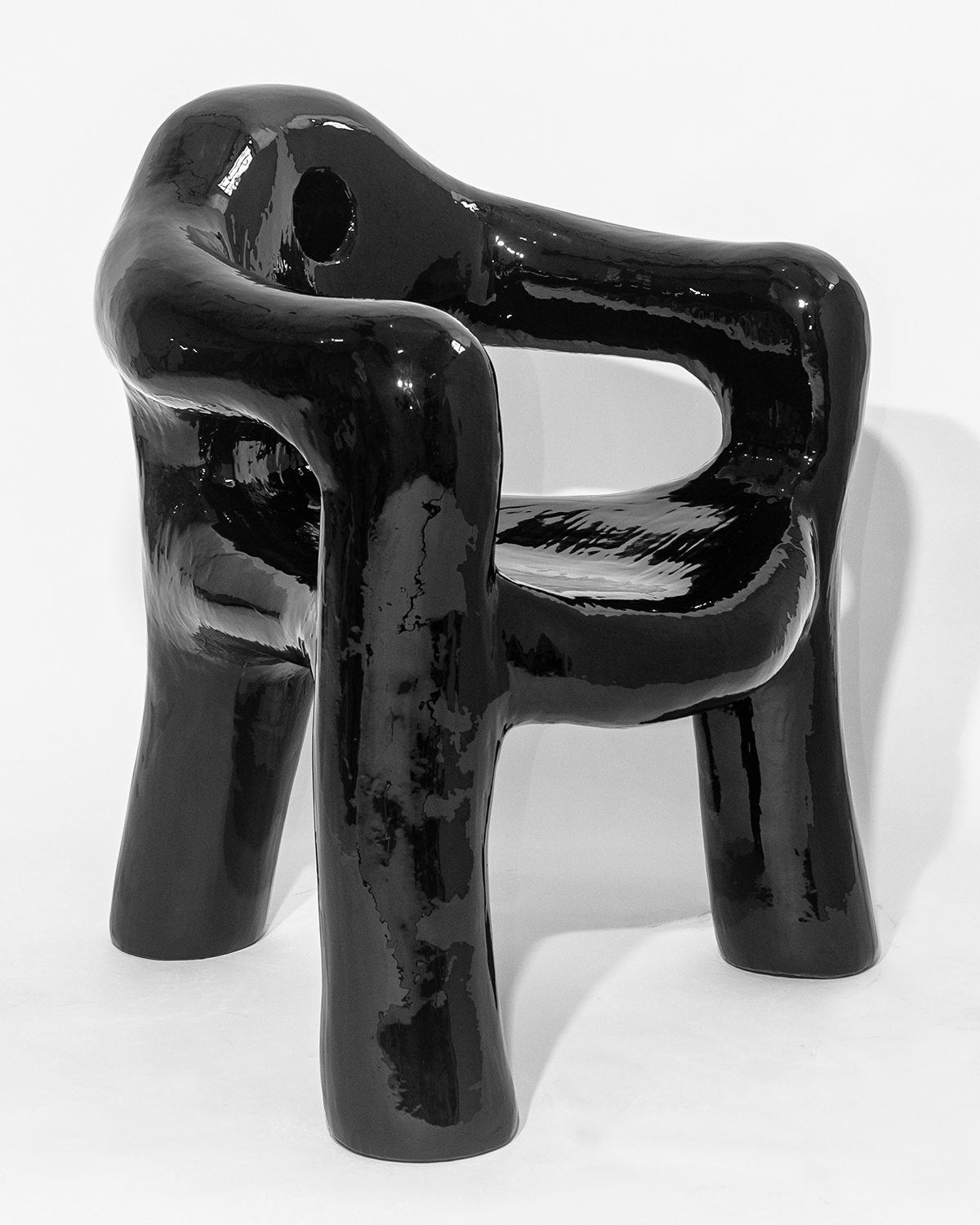

Let’s talk a little bit about the curvy purple Wool Gathering chair. I’m curious about the name of it.
I came up with the name after; I feel like I’m kind of bad at naming my pieces. Most of the time it’s kind of an afterthought. But I guess it just reflects the whimsical nature of that form.
And how do you find those forms?
The purple chair was one of the first pieces that I made, it’s all out of wood that’s been laminated. I use this router table setup to be able to round everything off and get it to be symmetrical. Gradually, as I’ve started to work, my materials have changed. I originally started working with wood for this chair, but with the pleated series, I was able to dive into working with foam. I wasn’t quite sure how far I could push the material’s mechanical properties and limits. So the chair had a wooden frame inside of it. The latest thing that I made, the black armchair, is actually all foam. I think the forms themselves come out of the materials that I work with. And I think I have, just based on intuition, this language of organic shapes. Especially now that I’ve been moving to much thicker pieces. I was limited with wood, and it’s part of the reason I transitioned into working with foam.
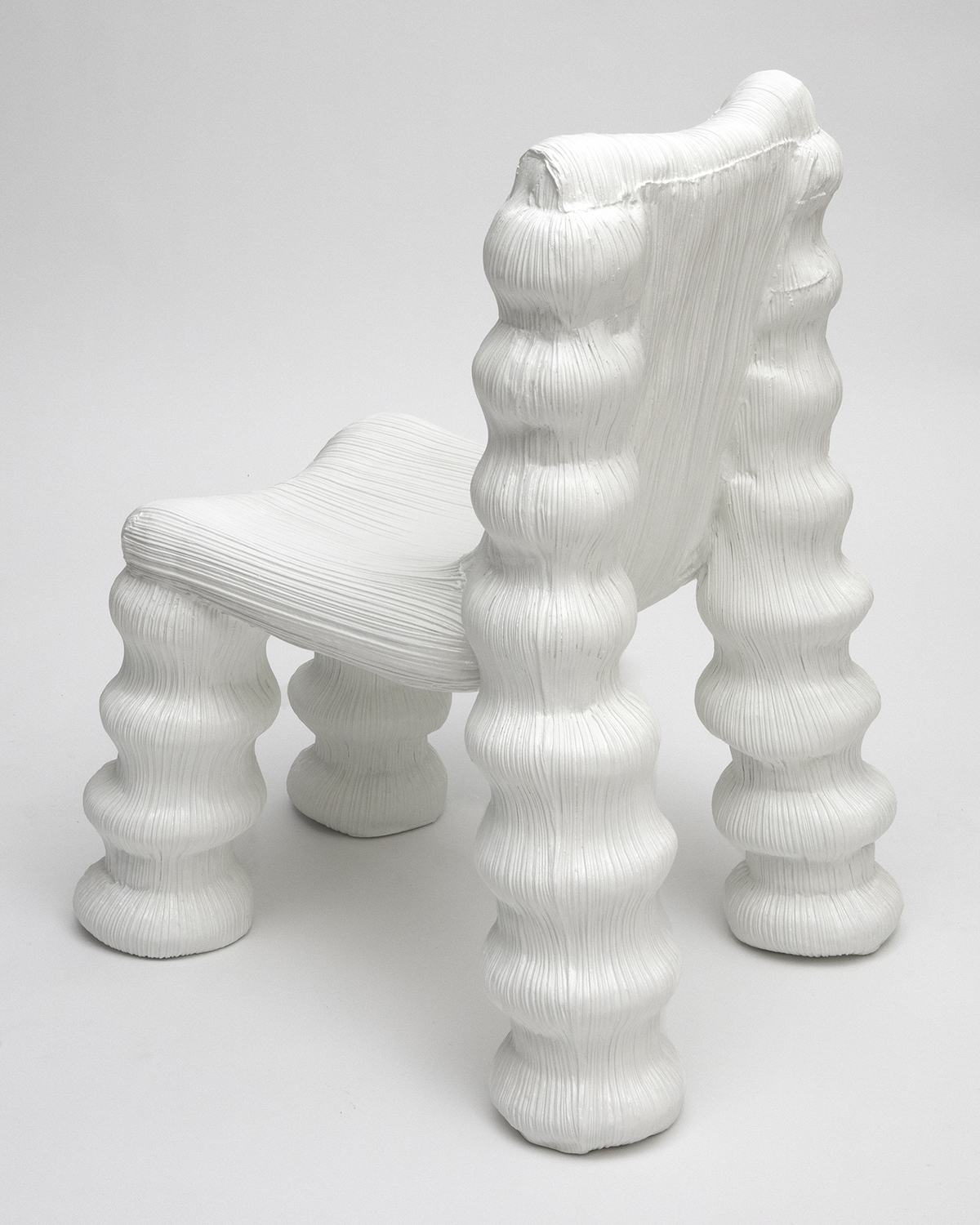
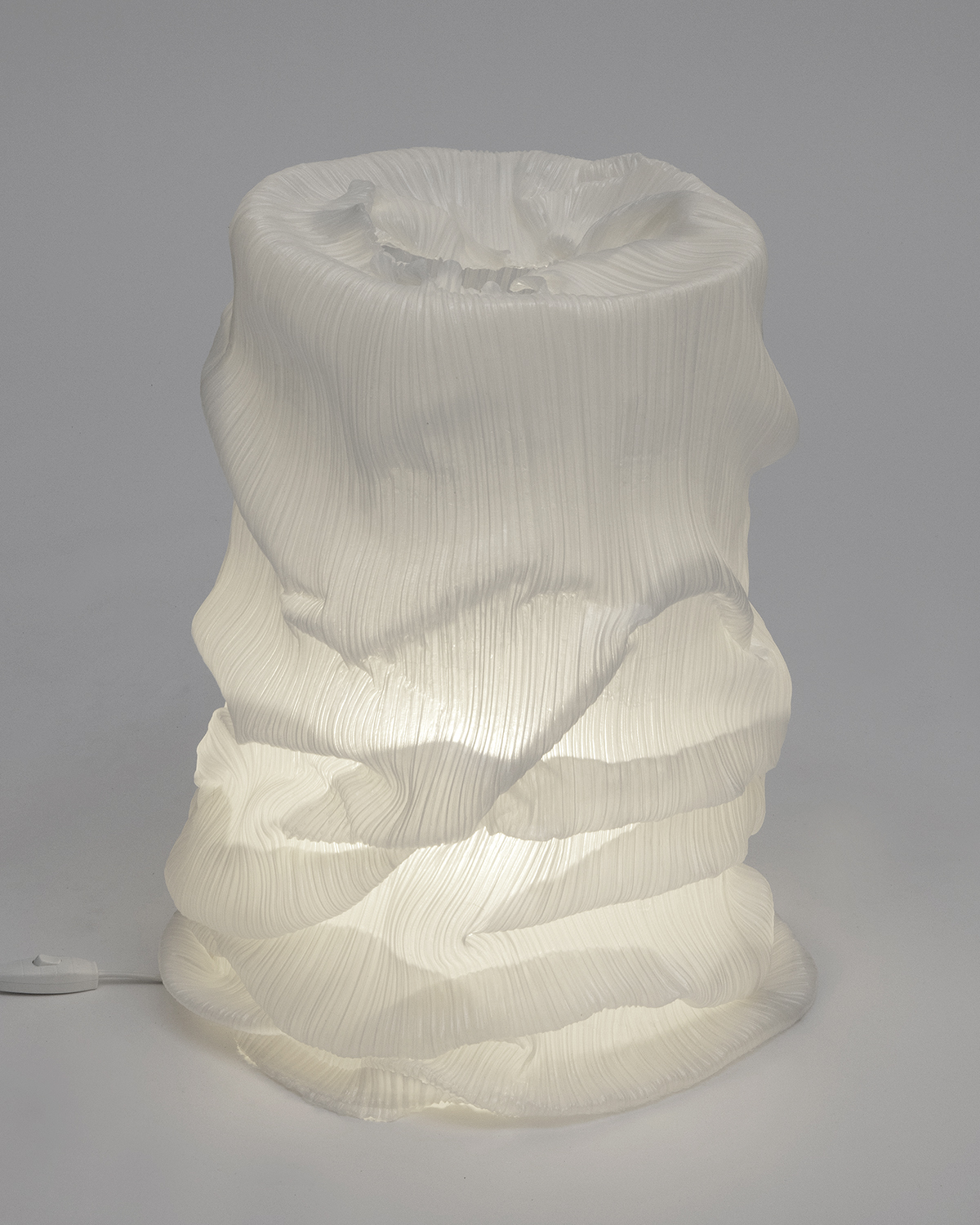
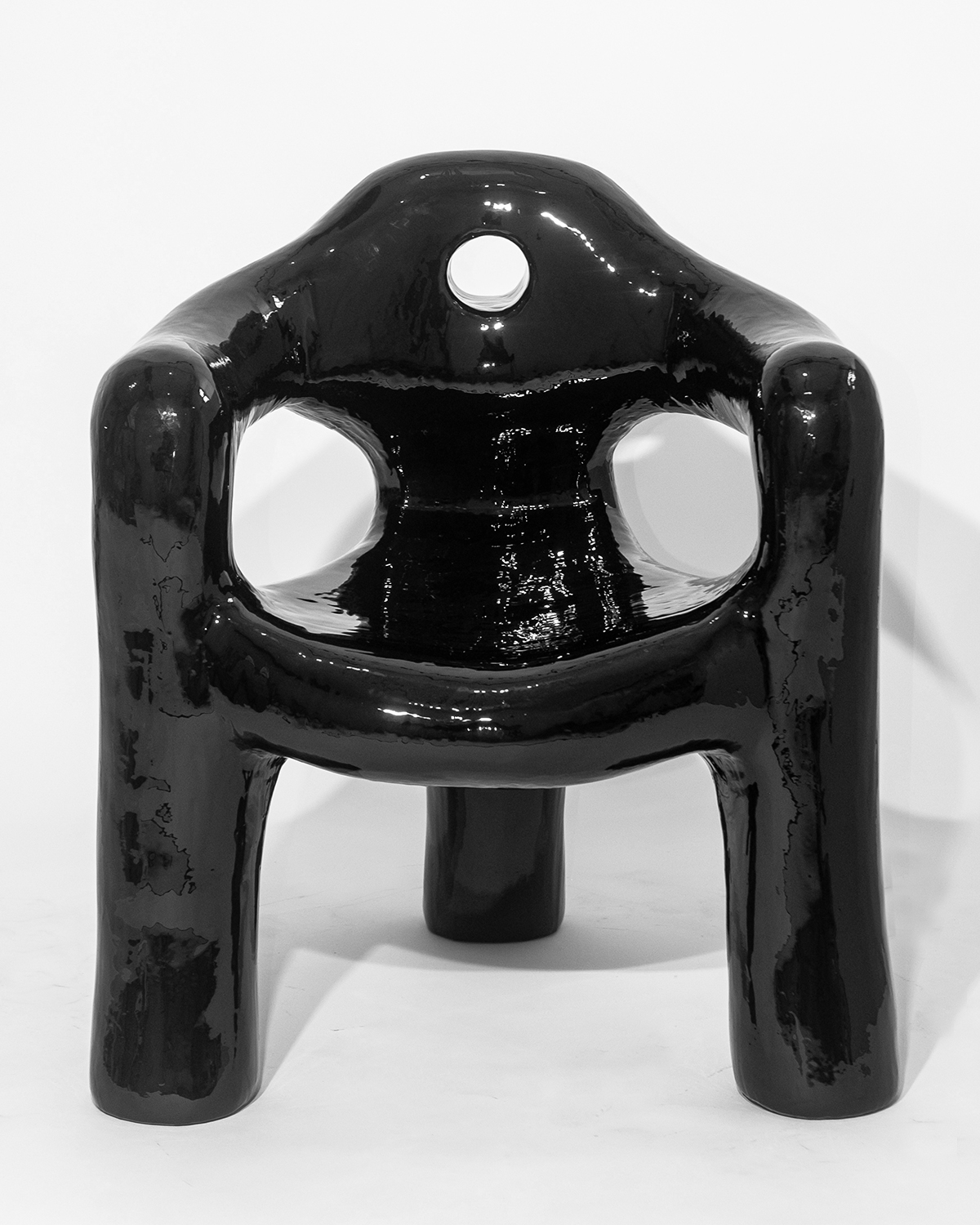
How do these recent pieces fit into the larger scope of your practice?
It’s super rewarding when I’m able to work on a project with a material that is easy to manipulate; I can hand carve it or position it in some way to make this form, and then I come back the next day and it’s completely hardened and I have a fully functioning object. I think then that extends into casting as well, which I would love to experiment with more in the future. With casting, you’re able to experience a much faster material change, where something is poured then it cools down or cures, and when you come back you have this transformation from a liquid state to a solid functioning state. That, to me, is what keeps me coming back every time. ◆
